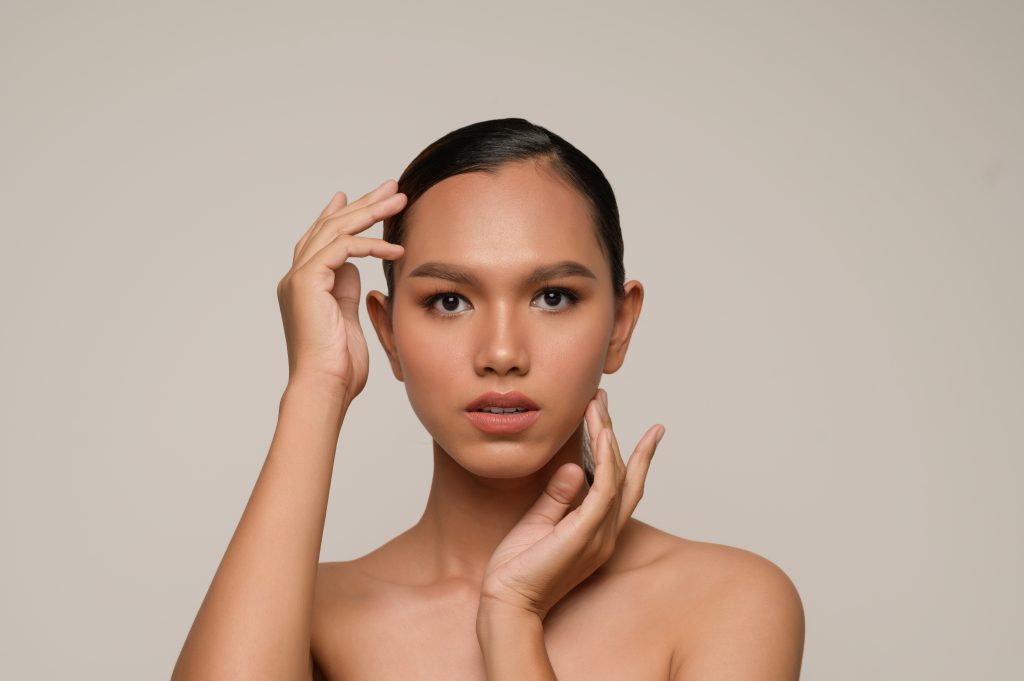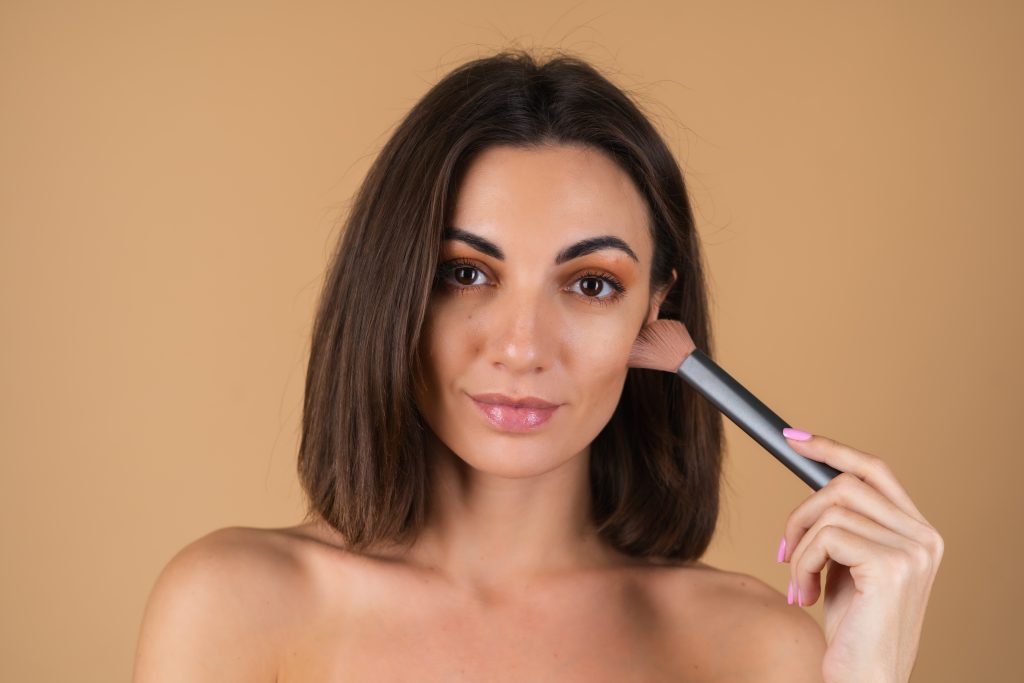Key Takeaways:
- Know your face shape first: Contouring works best when tailored to your specific face shape, such as oval, round, square, heart, or long/oblong.
- Placement matters: Apply contour to areas like cheek hollows, jawline, temples, forehead, and chin depending on your face shape to enhance natural features.
- Subtlety is key: Use gradual application and blending to avoid harsh lines or over-contouring. Less is often more.
- Highlight strategically: Complement contour with highlights on the center of the forehead, under eyes, chin, and nose bridge to create dimension.
- Use the right tools: Contour powders or creams, highlighters, angled brushes, and beauty sponges help achieve smooth, natural results.
- Adjust for context: Daytime looks benefit from subtle contouring, while night looks can be bolder with deeper shadows and highlights.
Contouring can seem intimidating if you’re new to makeup. You’ve probably seen flawless faces on social media and wondered how they achieve those sculpted cheekbones or perfectly defined jawlines. The secret isn’t magic—it’s knowing where to put contour for your specific face shape. In this guide, we’ll break it down step by step so you can enhance your natural features with confidence.
What Is Contouring and Why Does It Matter?
Contouring is a makeup technique that uses darker and lighter shades to define, shape, and highlight your facial features. By placing contour in the right spots, you can:
- Enhance cheekbones
- Slim your nose
- Define your jawline
- Add depth and dimension to your face
Remember, contouring isn’t about changing your face—it’s about accentuating your natural beauty.
How Do You Find Your Face Shape?

Before you grab your contour kit, it’s important to identify your face shape. Common shapes include:
- Oval: Balanced proportions, slightly narrower at the jaw than the temples
- Round: Fuller cheeks and a soft, circular jawline
- Square: Strong jawline, broad forehead, angular features
- Heart: Wider forehead, narrower chin, sometimes a pointed tip
- Long/Oblong: Longer than wide, with a high forehead and elongated chin
To determine your shape, pull your hair back, look in a mirror, and trace the outline of your face with a washable marker or a lipstick. This helps you visualize where shadows and highlights belong.
Where to Put Contour on Oval Faces

Oval faces are considered the “ideal” shape because of their balanced proportions. Contouring for this face shape is subtle:
- Apply contour along the temples to add dimension
- Lightly shade the sides of the jawline
- Define the hollows of the cheeks, blending toward the ear
- Highlight the center of the forehead, under the eyes, and chin
Pro tip: Avoid heavy contouring on the jawline; oval faces already have natural balance.
How to Contour Round Faces
Round faces benefit from contouring that creates the illusion of length and sharpness:
- Shade the sides of your cheeks, starting from the top of the ear down toward the corners of the mouth
- Apply contour along the temples and jawline to slim the face
- Highlight the center of the forehead, under the eyes, and chin to add vertical dimension
Tip: Blend well to avoid harsh lines that can make the face look even wider.
Where to Put Contour on Square Faces
Square faces have strong jawlines and broad foreheads. Contouring softens these features:
- Apply contour to the corners of the jawline to reduce squareness
- Shade the sides of the forehead near the hairline
- Define the cheek hollows, blending upward toward the temples
- Highlight the center of the forehead, chin, and under-eye area
Softening the angles with contour creates a more balanced, feminine look.
Contouring Heart-Shaped Faces
Heart-shaped faces have a wider forehead and a narrow chin. The goal is to balance the proportions:
- Apply contour to the sides of the forehead to reduce width
- Lightly contour the chin to make it appear fuller
- Define cheek hollows from the ears toward the mouth
- Highlight the center of the forehead, under the eyes, and tip of the chin
This technique draws attention to your cheekbones and softens the forehead.
Long or Oblong Faces: Where to Contour
Long faces need contouring to create the illusion of width:
- Contour the top of the forehead near the hairline
- Shade the bottom of the chin to shorten the face visually
- Apply contour along the cheek hollows, blending horizontally
- Highlight the center of the forehead, under the eyes, and center of the chin
This balances length and gives the face a proportional look.
How to Contour Your Nose
Contouring your nose can be tricky, but it’s all about subtlety:
- Shade the sides of the nose, blending carefully
- Highlight the bridge of the nose for a natural lift
- For wider noses, slightly deepen the nose sides
- For longer noses, add a touch of highlight to the tip
Remember, less is more—small adjustments create the biggest impact.
Tools You Need for Contouring
You don’t need a full professional kit to learn how to contour your face like a pro and get great results. Here’s what helps:
- Contour powders or creams: Choose one or two shades darker than your skin tone
- Highlighter: One or two shades lighter than your skin
- Blending brushes: Small, angled brushes for cheekbones and jawline
- Beauty sponge: For seamless blending
- Mirror: Preferably at eye level to avoid overdoing it
Invest in good blending tools; they make the difference between harsh lines and natural shadows.
Step-by-Step Contour Routine for Beginners
- Prep your skin: Cleanse, moisturize, and apply foundation
- Apply contour: Using a small brush, shade the areas we discussed for your face shape
- Blend: Always blend upwards and outwards, avoiding harsh lines
- Highlight: Apply highlighter to the center of your face and under the eyes
- Set: Use translucent powder to lock the look in place
Tip: Build the contour gradually—you can always add more, but it’s hard to remove excess.
Common Mistakes and How to Avoid Them
Even beginners can avoid pitfalls with a little guidance:
- Over-contouring: Start light; heavy contouring can look unnatural
- Wrong placement: Study your face shape before applying
- Not blending: Harsh lines make the contour obvious
- Ignoring lighting: Always contour in natural light if possible
A few minutes of careful application goes a long way.
Quick Tips for a Natural Look
- Use cream contours for a soft, everyday look
- Blend highlighter for a subtle glow, not a stripe
- Avoid dark contour under the eyes—this can create a tired appearance
- Use a light hand; it’s easier to build up than fix over-application
How to Adjust Contour for Day vs. Night
- Day: Keep contour subtle, focusing on cheekbones and temples
- Night: Go bolder with deeper shadows and stronger highlights for dramatic photos
The right balance depends on your setting and desired effect.
Wrapping Up
Contouring isn’t a one-size-fits-all process. Knowing where to put contour for your face shape is the key to enhancing your features naturally. Practice makes perfect, and with the tips in this guide, you can achieve a sculpted, polished look every time.
Remember: contouring is about confidence. Take your time, experiment with different techniques, and let your unique beauty shine through.